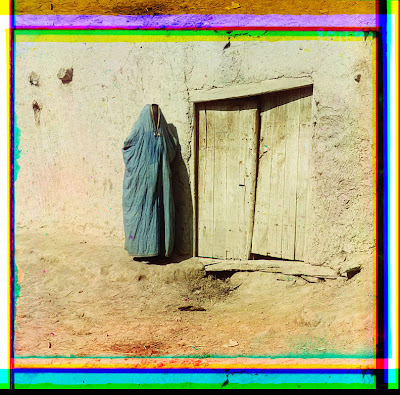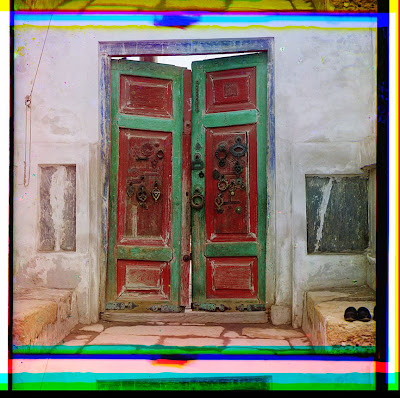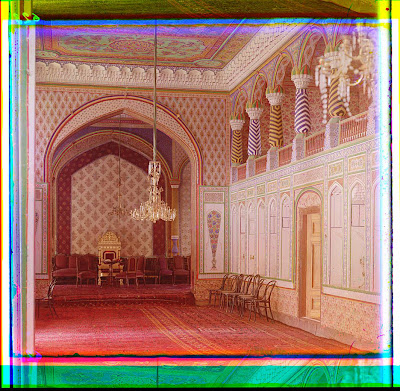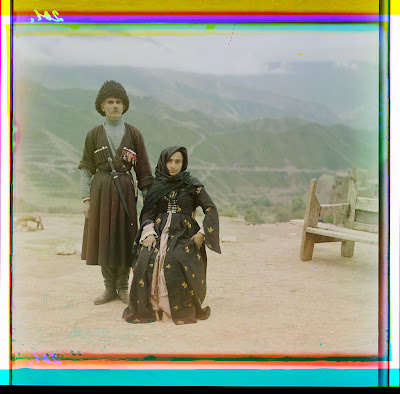 |
| Samarkand |
 |
| Bukhara |
 |
| Armenian woman |
 |
| carpet seller (detail) |
 |
| fruit seller (detail) |
 |
| Bukhara |
 |
| above two, typical natives of Dagestan |
Sergey Mikhaylovich Prokudin-Gorsky (August 30 1863 – September 27, 1944), the photographer behind all of these images, was a Russian of noble extraction who studied chemistry under Mendeleev (creator of the periodic table). Moving to Berlin for more study, Gorsky applied his scientific background to photo chemical processing. He developed a pioneering method of creating color slide film and color motion pictures, and eventually garnered patents in Germany, England, France and Italy.
His process used a camera that took a series of three monochrome pictures in sequence, each through a different-colored filter. By projecting all three monochrome pictures using correctly colored light, it was possible to reconstruct the original color scene. (wikipedia)
Around 1905 Gorsky started devising a plan to systematically document the vast diversity of the Russian empire. Accomplished and well-connected, he was invited in 1909 to make a photographic demonstration for Tsar Nicholas and his family. The presentation went over so well that the ill-fated monarch gave Gorsky a specially equipped railroad-car darkroom, two skeleton key permits granting him access to restricted
areas around the empire and cooperation from the far-flung bureaucracy. Suddenly, his herculean project became possible. Gorsky
documented the Russian Empire from 1909 through 1915, and gave photo lectures thereafter. He eventually fled the country shortly after the Revolution, with the authorities confiscating about half his archive because of purportedly “sensitive material”.
After settling in Paris, Gorsky stored the remainder of his photographs and fragile glass plates in the basement of his apartment building. A few years after his death, in 1948, the US Library of Congress purchased the material from his heirs for $3500–$5000. Outside the Library of Congress collection, nothing else of Gorsky's work has yet been found.
 |
| Sergey Mikhaylovich Prokudin-Gorsky in 1912 |

































































